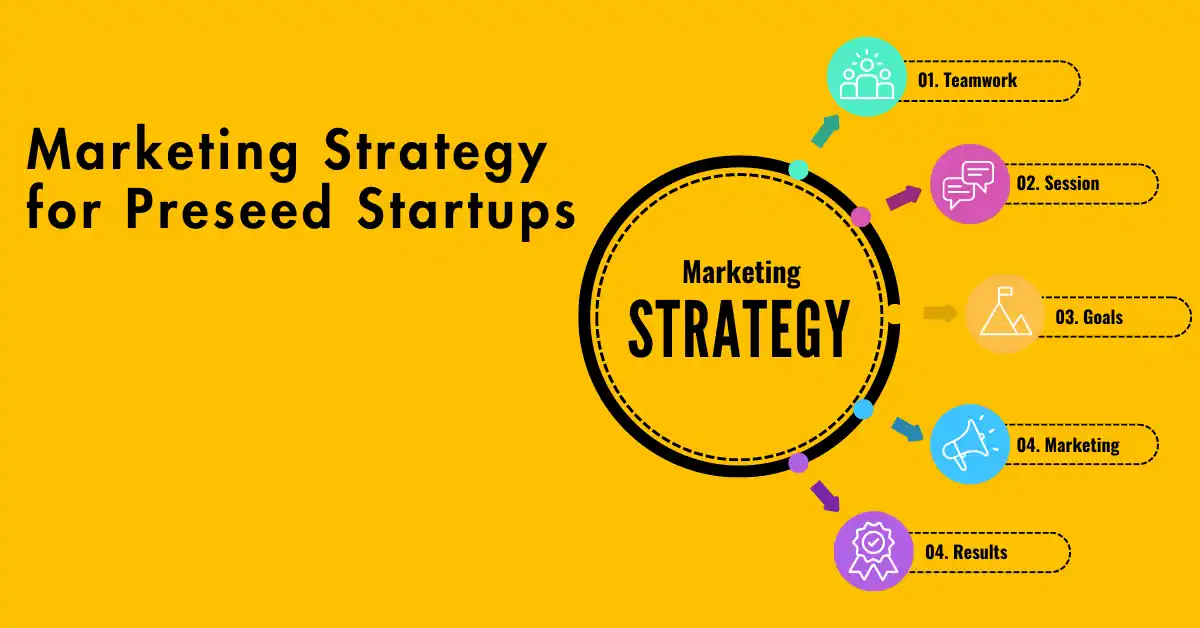Launching a preset startup can feel like being thrown into the deep end of a pool without knowing how to swim. You have a great idea, but how do you turn that idea into a successful business? The answer lies in a solid marketing strategy for preseed startups.
In this article, we’ll explore the essential elements of crafting a marketing strategy specifically tailored for preseed startups.
Table of Contents
ToggleUnderstanding Preseed Startups
What is a seed Startup?
A preseed startup is typically in its infancy, often before the product is fully developed or even launched. Founders usually rely on personal savings, support from friends and family, or angel investors to get things off the ground. At this stage, every decision counts, and a strong marketing strategy is crucial to attract interest and investment.
Importance of a Strong Marketing Strategy
Why bother with a marketing strategy if you’re still in the early stages? Think of it this way: a marketing strategy is like a compass guiding you toward your destination. It helps you identify your audience, communicate your value, and build relationships that can lead to funding and growth.
Marketing Strategy for Preseed Startups
Identifying Your Target Audience
To connect with your audience effectively, you need to know who they are. Start by building customer personas—detailed profiles representing your ideal customers. Consider demographics like age, gender, location, interests, and pain points. The more specific you are, the better you can tailor your messaging.
Building Customer Personas
Creating detailed customer personas helps in understanding your target market. Start by gathering data through surveys or social media insights. What challenges do they face? What solutions are they looking for? This knowledge will inform your marketing strategy for preseed startups.
Market Research Techniques
Conducting market research doesn’t have to break the bank. Use surveys, interviews, and online tools like Google Trends to gather insights about your target audience. Additionally, leverage social media platforms to observe discussions around topics relevant to your startup.
Crafting Your Unique Value Proposition (UVP)
Defining Your Brand’s Core Values
Your UVP is what sets you apart from the competition. It should clearly articulate why someone should choose your product or service over another. Start by defining your brand’s core values. What do you stand for? How do you want to be perceived?
Selecting the Right Marketing Channels
Digital Marketing vs. Traditional Marketing
In today’s digital age, it’s tempting to dive straight into online marketing. However, don’t dismiss traditional marketing methods. Depending on your audience, a mix of digital and traditional marketing strategies might work best. Explore options like social media, email marketing, and even local events to reach potential customers.
Effective Social Media Strategies
Social media is a goldmine for preset startups. Platforms like Facebook, Instagram, and LinkedIn allow you to engage with your audience directly. Share behind-the-scenes content, customer testimonials, and valuable insights to build rapport and trust. Remember, it’s not just about selling; it’s about creating a community.
Creating a Budget-Friendly Marketing Plan
Cost-Effective Marketing Tactics
Budget constraints are a reality for most preset startups. Focus on cost-effective tactics like content marketing, SEO, and email campaigns. Write engaging blog posts that provide value and drive traffic to your site. Collaborate with influencers or other startups for cross-promotion to extend your reach without spending a fortune.
Measuring and Analyzing Marketing Efforts
Key Performance Indicators (KPIs)
You need to know what’s working and what’s not. Set clear KPIs to measure the success of your marketing efforts. This could include website traffic, social media engagement, or lead conversion rates. Regularly review these metrics to refine your strategy and make informed decisions.
Adapting Your Strategy as You Grow
Flexibility and Adaptability
The startup landscape is ever-changing, and your marketing strategy should be too. Stay open to feedback and be willing to pivot your approach based on market trends and audience needs. Remember, flexibility is key to long-term success.
Conclusion
Navigating the early stages of a preseed startup can be challenging, but with a well-thought-out marketing strategy for preseed startups, you can set yourself up for success. From understanding your audience to crafting your UVP and measuring your efforts, each step is vital in building a brand that resonates. So, take the plunge—your startup’s future depends on it!
FAQs
Q: What is a preset startup?
A preseed startup is an early-stage company that has not yet launched its product or service and typically relies on personal savings or early investors.
Q: Why is a marketing strategy important for preseed startups?
A marketing strategy helps preseed startups identify their target audience, communicate their value proposition, and build relationships that can lead to growth and funding.
Q: How do I identify my target audience?
You can identify your target audience by creating customer personas based on demographics, interests, and pain points and conducting market research through surveys and social media.
Q: What are some cost-effective marketing tactics for startups?
Cost-effective tactics include content marketing, SEO, email campaigns, and social media engagement, allowing startups to connect with their audience without overspending.
Q: How can I measure the success of my marketing efforts?
You can measure success by setting key performance indicators (KPIs) such as website traffic, social media engagement, and lead conversion rates to assess the effectiveness of your marketing strategies.






